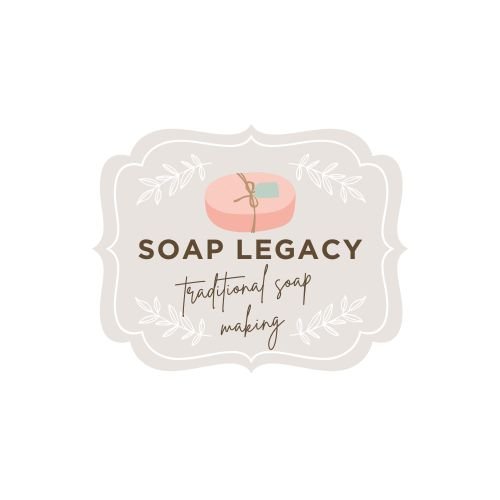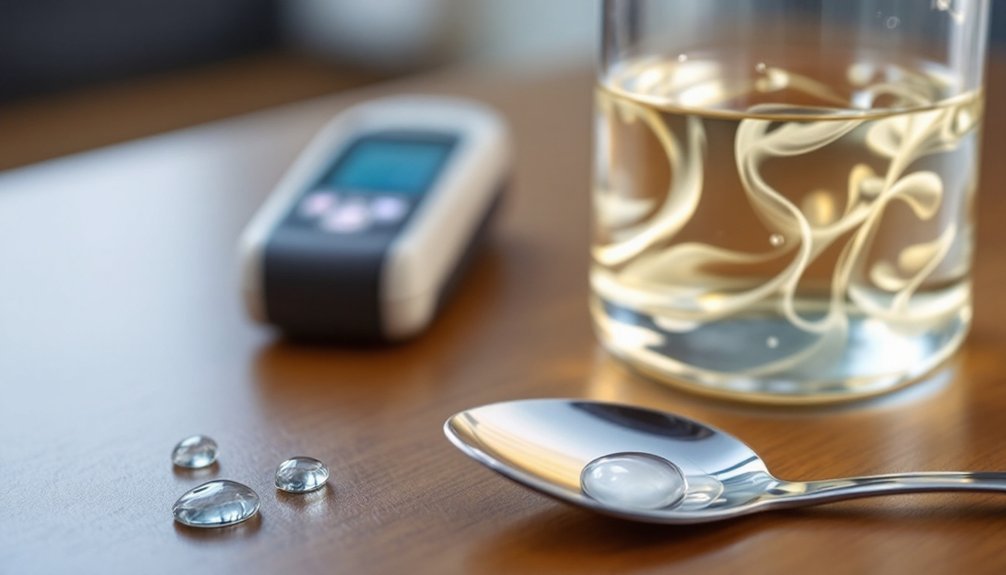You can check glycerin content through seven quick methods: refractometry for 30-second results, assay kits for efficient testing, titrimetric measurement for cost-effective analysis, visual clarity inspection, skin feel assessment for moisturizing properties, bubble structure examination (small, dense bubbles indicate higher glycerin), and bubble stability tests with a stopwatch. For home testing, try the water solubility test or soap lather quality assessment. Explore these methods to determine which works best for your specific needs.
7 Quick Methods to Check Glycerin Content

Determining glycerin content doesn't have to be complex or time-consuming. You'll find refractometry particularly useful, delivering results in just 20-30 seconds with minimal sample preparation. This method offers high accuracy (±0.017 g/100 g) for aqueous glycerol solutions. Abbemat refractometers efficiently convert refractive index measurements to glycerol percentage mass with excellent reproducibility.
Ready-to-use assay kits provide another efficient option, with reaction times of approximately 5 minutes in a microplate format that enables high-throughput testing. They're versatile enough for beverages, cosmetics, and pharmaceuticals.
For rapid, versatile glycerin analysis, microplate assay kits deliver results in just 5 minutes across multiple industries.
If you're on a budget, consider titrimetric methods. While slightly longer at under 10 minutes for semi-micro extraction, they're cost-effective with error rates below 3.4%.
For highest sensitivity, chromatography methods like HPLC and GC are available, though they require more investment in time and resources.
The Zap Test: Assessing Glycerin Through Ph Balance
Despite its name suggesting a glycerin assessment, the zap test actually evaluates soap's pH balance by detecting excess lye rather than measuring glycerin content directly.
This traditional method involves touching a small amount of soap to your tongue – a "zap" or stinging sensation indicates alkalinity from unreacted lye.
While simple and cost-effective, the zap test lacks the precision of digital pH meters or laboratory methods. It's primarily useful for bar soaps, not liquid formulations.
For safety, wait at least 2-3 days after making soap before testing, and always wear gloves when handling fresh soap. In liquid soapmaking, digital pH meters are recommended over the zap test for more accurate results when checking if saponification is complete.
For more reliable results, consider combining the zap test with pH strips or digital meters.
Remember that safe soap typically registers between pH 8-10, though the zap test won't provide a numerical value.
Clarity Method: Visual Inspection for Glycerin Transparency

The clarity method offers a simple, accessible approach to evaluating glycerin content through visual observation. By examining how glycerin increases a solution's refractive index, you can estimate its presence through enhanced transparency.
Assess glycerin content simply by observing how it enhances solution transparency through increased refractive index.
For best results, place your sample against a white background under good lighting. Thoroughly mix your solution to eliminate particulates that might interfere with observation. Creating comparison standards with known glycerin concentrations will help calibrate your assessments.
While this technique lacks the precision of spectrophotometric or titration methods, it's cost-effective and requires minimal equipment. This approach differs significantly from enzymatic bio-analysis techniques that offer more accurate glycerol quantification in wine samples. It's particularly useful in cosmetics, food products, and biological sample preparation where exact quantification isn't critical.
Remember that results remain subjective and dependent on your visual acuity, making this method better suited for rough estimations than precise measurements.
Water Solubility Test for Glycerin Content
While chemical analysis provides precise measurements, a water solubility test offers a practical approach to evaluating glycerin content in various substances.
You'll need to prepare your sample by adding it to water at a specific ratio—typically 1:10. Pure glycerin dissolves completely due to its full miscibility with water. If your sample contains impurities or less glycerin, you'll notice incomplete dissolution or separation.
Temperature greatly affects this test; warmer water improves solubility. Control your testing environment to maintain consistent results and account for glycerin's hygroscopic nature, which can skew outcomes in humid conditions.
For more viscous samples, extend mixing time and observe carefully. Similar to how composite materials can be customized through constituent ratios, the solubility profile of glycerin-containing samples changes with concentration.
This simple test won't replace analytical methods but serves as a quick quality indicator when precision instruments aren't available.
Alcohol Flame Test to Identify Glycerin Levels

Popular misconceptions notwithstanding, standard alcohol flame tests aren't reliable for identifying glycerin levels in substances.
While alcohol flame tests can produce colorful displays when mixed with various salts, they don't react specifically to glycerin's molecular structure (C₃H₈O₃).
You'll need to understand these critical limitations:
- Misleading Results – Flame tests primarily detect metal ions (like sodium or strontium), not glycerin's presence or concentration.
- Safety Hazards – Attempting to use alcohol flame tests improperly can lead to dangerous combustion situations.
- Wasted Resources – Relying on this method will cost you valuable time better spent on proper analytical techniques like chromatography.
For accurate glycerin quantification, chemical titration or chromatographic analysis provides considerably more reliable results than any flame-based method. Unlike ethanol, glycerin has hydrogen bonding capabilities that require specific chemical tests to properly identify and measure.
Soap Lather Quality as a Glycerin Indicator
You can evaluate a soap's glycerin content by examining its lather quality, as higher glycerin levels typically produce richer, more stable foam.
When testing lather, observe both the initial volume and how long the bubbles maintain their structure before collapsing.
The bubble stability test is particularly revealing—soaps with substantial glycerin content will form bubbles that persist longer due to glycerin's moisture-retaining properties.
Soaps containing high amounts of humectants like glycerin, propylene glycol, and sorbitol will typically generate plenty of bubbles despite having zero super fat content.
Lather Analysis Techniques
Evaluating the quality of soap lather provides valuable insights into glycerin content without requiring complex chemical testing. When you analyze lather, focus on its stability, texture, and moisture retention—all indicators of glycerin's presence. Higher glycerin levels typically result in richer, more stable foam due to glycerin's ability to reduce water's surface tension. Similar to how researchers evaluate model outputs in structured JSON formats, soap lather analysis provides structured data about glycerin content.
For reliable lather analysis, consider these key approaches:
- Volume and persistence test – Observe how quickly the lather forms and how long it remains stable before dissipating.
- Skin feel assessment – Note the moisturizing sensation left after rinsing, as glycerin-rich soap won't leave your skin feeling tight or dry.
- Bubble structure examination – Check for small, dense bubbles that indicate proper glycerin integration rather than large, airy ones.
Bubble Stability Test
A simple yet revealing method for evaluating glycerin content in soap involves testing bubble stability. You'll need a pipe cleaner formed into a loop for consistency and a stopwatch to measure bubble longevity.
Create solutions using equal volumes of your soap samples. Dip the wand, blow bubbles, and time how long they persist before popping. Glycerin-rich soaps will produce bubbles that last considerably longer due to glycerin's ability to form hydrogen bonds with water molecules, reducing evaporation.
Watch for differences in bubble appearance too—higher glycerin content creates bubbles with more elastic, thicker walls that stretch further without breaking. Research shows that glycerol concentration directly correlates with increased microbubble stability and lifetime across various concentrations up to 30%.
Environmental conditions matter, so conduct all tests under the same temperature and humidity for reliable comparison. This test effectively differentiates between glycerin and corn syrup additives.
Simple Home Titration for Glycerin Percentage

How can you accurately measure glycerin content without expensive lab equipment? With a basic titration setup including a burette, pH meter, and standard sodium hydroxide solution, you can determine glycerin percentage at home. This method relies on glycerin's reaction with sodium metaperiodate, which produces formic acid that's then titrated with sodium hydroxide. Make sure JavaScript is enabled in your browser when accessing online calculators for converting your titration results into percentage values.
Accurately measure glycerin at home using simple titration techniques with basic equipment instead of costly lab apparatus.
- Safety first – Always wear protective gear when handling chemicals to protect yourself from potentially harmful reactions.
- Precision matters – Careful measurement of your titration volumes will dramatically improve your accuracy and give you reliable results.
- Eliminate interference – Pre-treat your samples to remove sugars and other compounds with adjacent hydroxyl groups that could skew your results.
Calculate glycerin content by comparing your titration volume against a blank, following ASTM guidelines for consistent reporting.
Frequently Asked Questions
How Do Refractometer Readings Change With Temperature for Glycerin Solutions?
Temperature affects your refractometer readings because glycerin's refractive index changes as temperature fluctuates. Without proper temperature compensation, you'll get inaccurate measurements. That's why you'll need refractometers with automatic temperature compensation for reliable results.
Can Glycerin Content Be Measured Accurately in Colored Cosmetic Products?
Yes, you can accurately measure glycerin in colored cosmetics using GC-MS, HPLC, or NMR techniques. These methods overcome color interference through proper sample preparation and calibration, ensuring reliable quantification despite the product's complexity.
What's the Minimum Equipment Needed for Industrial-Grade Glycerin Testing?
You'll need a gas chromatograph for measuring contaminants, a spectrophotometer for identification, TLC equipment for substance differentiation, and quality analysis software to process results. Standards compliance is equally essential for industrial testing.
How Do Preservatives Affect Glycerin Content Measurement Results?
Preservatives can interfere with your glycerin measurements by altering sample viscosity, creating similar retention times in HPLC analysis, or chemically reacting with glycerin. You'll need proper calibration and controls to guarantee accurate results.
Are There Non-Destructive Methods for Testing Glycerin in Finished Products?
Yes, you can use refractometry to test glycerin in finished products non-destructively. It's quick (20-30 seconds), requires just a few drops, and preserves your sample while providing accurate concentration measurements.
In Summary
You've now got seven reliable methods to quickly check your product's glycerin content at home. Whether you're using the zap test, clarity inspection, water solubility test, alcohol flame test, lather assessment, or simple titration, you'll get immediate results. These techniques don't require expensive lab equipment but still provide accurate insights. Try them today to guarantee your soaps, cosmetics, or other glycerin-based products meet your quality standards.





Leave a Reply